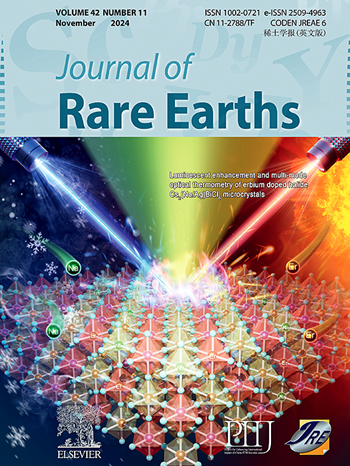Innovative pilot-scale process for sustainable rare earth oxide production from coal byproducts: A comprehensive environmental impact assessment
IF 7.2
1区 化学
Q1 CHEMISTRY, APPLIED
引用次数: 0
Abstract
This study developed a pilot-scale process feeding with two different materials resulting from a column leaching process and acid mine drainage (AMD) streams to recover rare earth elements (REEs). A life cycle assessment (LCA) study was done to evaluate the environmental impacts of rare earth production from deleterious material in the form of highly contaminated leachate (HCL) and low-contaminated leachate (LCL). The results indicate that the main contributors to environmental categories that produce RE-hydroxide stages are NaOH and electricity. Also, oxalic acid, Na2CO3, and hydrochloric acid significantly contribute to the production stage of individual rare earth oxides (REOs), including solvent extraction (SX) and precipitation steps. The HCL route has higher environmental impacts than LCL due to higher chemical/energy and H2SO4 usage, so 468 and 292 kg of carbon dioxide are generated to produce 1 t of individual REOs from HCL and LCL routes, respectively. Moreover, the carbon dioxide emitted from the process, including the RE-hydroxide production, SX, and REOs production, is less than 10 t CO2. A sensitivity analysis was also performed to assess the changeability of the environmental footprints of the main inputs in the SX process, as the main stage has a higher contribution to the whole process. This LCA study is the first step toward understanding the environmental influence of new processing methods to produce REEs from coal by-products through a developed pilot-scale process.

利用煤炭副产品生产可持续稀土氧化物的创新型试验规模工艺:综合环境影响评估
本研究开发了一种中试工艺,采用柱式浸出过程和酸性矿山排水(AMD)流产生的两种不同材料进行进料,以回收稀土元素(REEs)。采用生命周期评价(LCA)方法对高污染渗滤液(HCL)和低污染渗滤液(LCL)两种有害物质生产稀土的环境影响进行了评价。结果表明,产生re - oh阶段的主要环境类别是NaOH和电。此外,草酸、Na2CO3和盐酸对单个稀土氧化物(REOs)的生产阶段有显著影响,包括溶剂萃取(SX)和沉淀步骤。由于化学/能源和H2SO4的使用量更高,HCL路线比LCL路线对环境的影响更大,因此HCL和LCL路线分别产生468和292公斤二氧化碳,以生产1吨单个reo。此外,该过程中排放的二氧化碳,包括氢氧化re的生产、SX和REOs的生产,都小于10 t CO2。由于主要阶段对整个过程的贡献较大,因此还进行了敏感性分析,以评估SX过程中主要投入物的环境足迹的可变性。这项LCA研究是了解通过开发的中试规模工艺从煤副产品中生产稀土的新加工方法对环境影响的第一步。
本文章由计算机程序翻译,如有差异,请以英文原文为准。
求助全文
约1分钟内获得全文
求助全文
来源期刊

Journal of Rare Earths
化学-应用化学
CiteScore
8.70
自引率
14.30%
发文量
374
审稿时长
1.7 months
期刊介绍:
The Journal of Rare Earths reports studies on the 17 rare earth elements. It is a unique English-language learned journal that publishes works on various aspects of basic theory and applied science in the field of rare earths (RE). The journal accepts original high-quality original research papers and review articles with inventive content, and complete experimental data. It represents high academic standards and new progress in the RE field. Due to the advantage of abundant RE resources of China, the research on RE develops very actively, and papers on the latest progress in this field emerge every year. It is not only an important resource in which technicians publish and obtain their latest research results on RE, but also an important way of reflecting the updated progress in RE research field.
The Journal of Rare Earths covers all research and application of RE rare earths including spectroscopy, luminescence and phosphors, rare earth catalysis, magnetism and magnetic materials, advanced rare earth materials, RE chemistry & hydrometallurgy, RE metallography & pyrometallurgy, RE new materials, RE solid state physics & solid state chemistry, rare earth applications, RE analysis & test, RE geology & ore dressing, etc.
 求助内容:
求助内容: 应助结果提醒方式:
应助结果提醒方式:


